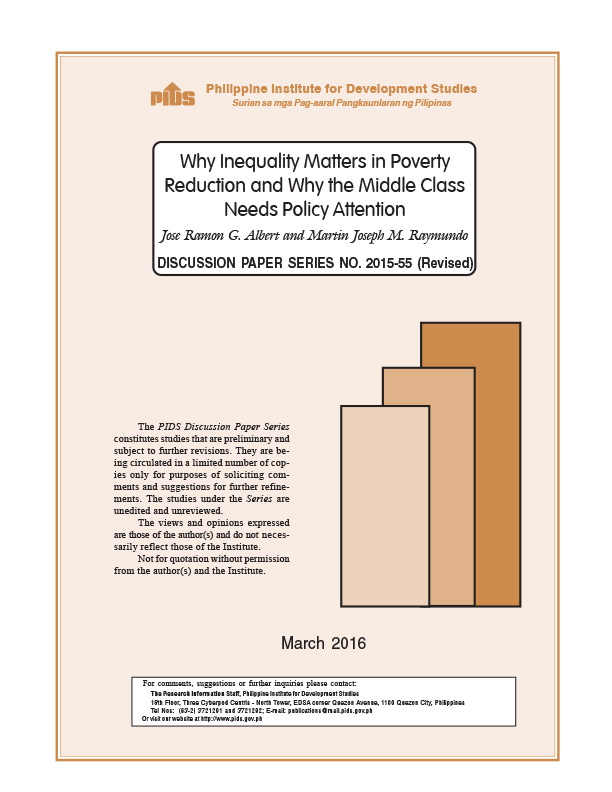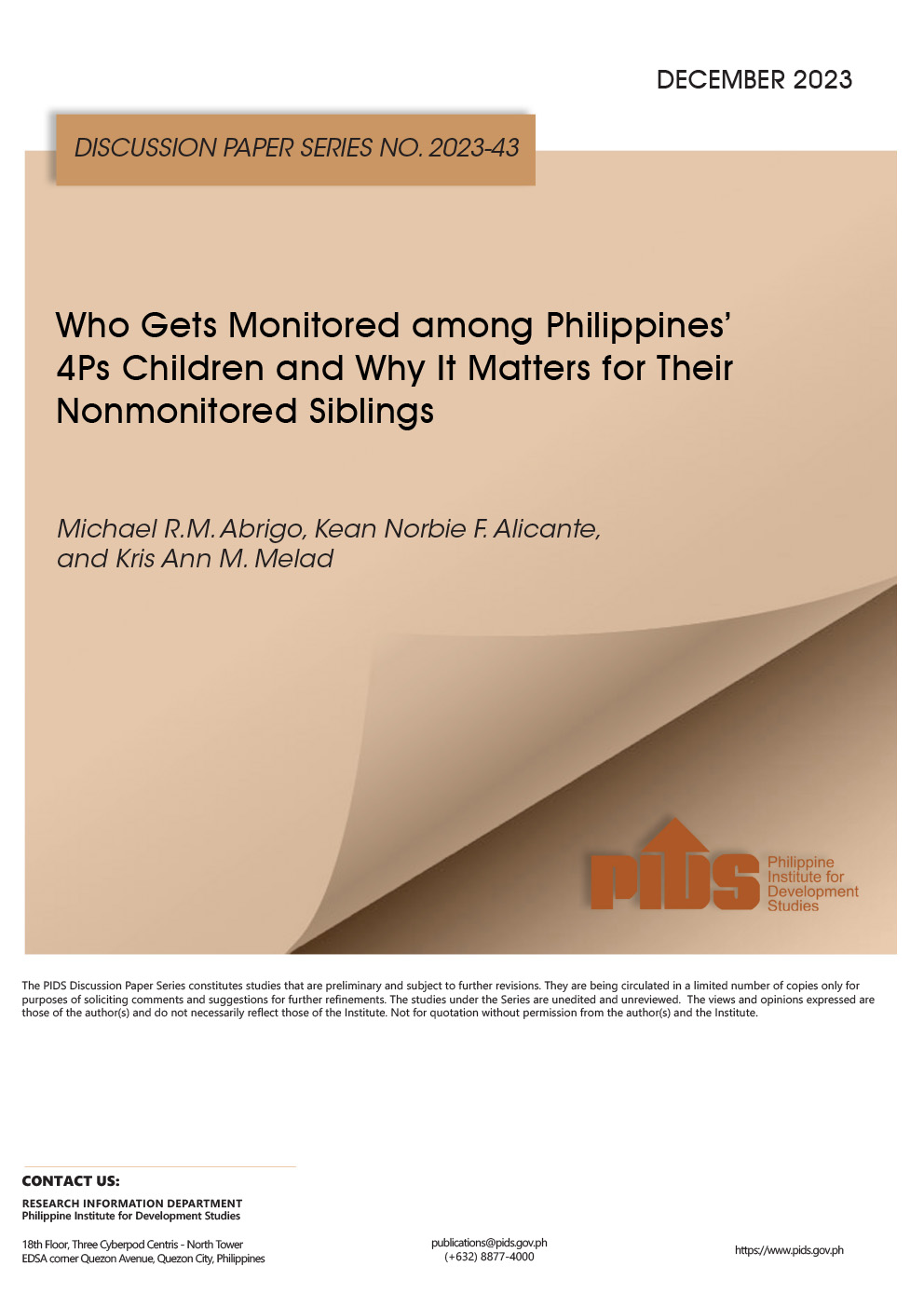While the Philippines has had a new economic growth trajectory in recent years, the country has had little progress in reducing poverty and in making growth more inclusive. This paper examines trends in macroeconomic statistics, and the progress government has had in its Philippine Development Plan and in achieving the Millennium Development Goals. It discusses the need to address the lack of political inclusion. It also looks into income distribution and income inequality; and proposes a definition of the middle-income class, laying down seven income classes based on the national poverty lines. It also profiles the middle-income class vis-a-vis other income classes given the potential of the middle-income class to sustain economic growth. It argues that government need not only focus its attention to the poor, but also strengthen the middle class toward improving opportunities and reducing inequalities.
Citations
This publication has been cited 2 times
- Khushi, Sana, et. al. 2020. Spatially analyzing food consumption inequalities using GIS with disaggregated data from Punjab, Pakistan. The International Society for Plant Pathology, 12, No. 6, 1283-1298. Springer.
- Czeriza Valencia. 2017. Minimum wage hike detrimental to less privileged workers — PIDS. Philippine Star.













